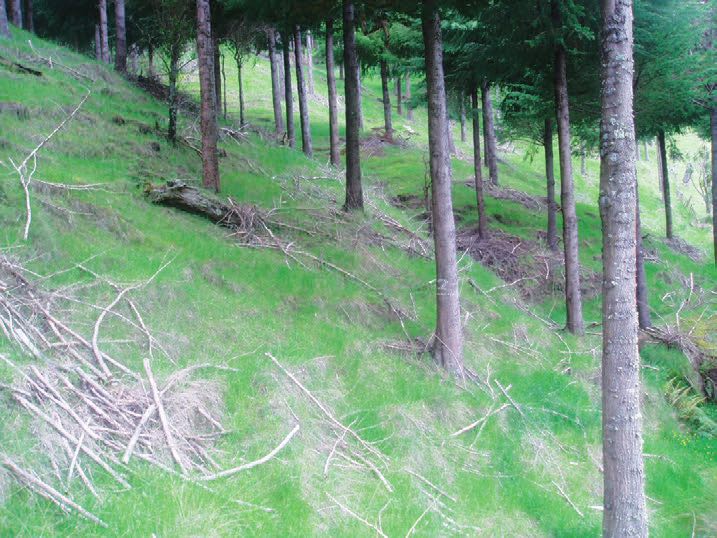Macrocarpa and cypresses in general
Don Tantrum, New Zealand Tree Grower February 2010.
I was asked to write something for the cypress feature although I am sure that much of it has been written before. This brief article is based on my conclusions drawn from experiences and theories growing and milling cypresses in the Taihape area and observing them around New Zealand.
Planting
Cypresses need to have good shelter and drainage with reasonable fertility and rainfall. Shelter will need to be provided if the site is exposed.
I prefer seedlings to cuttings, providing the seed source is reliable. I have over 100 different cypress species, clones and seed lots growing with about 30 to 40 macrocarpas. My best identified seed lot for macrocarpa is from Rodney Faulkner in Gisborne. Cuttings tend to grow more slowly and are more expensive. However, I have found that the site is more important than genetics. In my experience, if plants with good genetics are planted in a poor site there will likely be a crop failure. Plants with poor genetics will grow well on a good site.
I have tried all spacings from two metres by two metres to eight by eight and now plant at between three and four metres depending on how good the site is.
Pruning
Do not start too soon and do not get carried away. With the first prune I leave the lower 80 cm of branches on which can be shortened if required. By leaving these branches on you can carefully graze with sheep after the second summer without the bark being stripped. Leave these lower branches on until the tree is about 150 mm diameter at breast height. By this time the bark will be sheep-proof although never graze with cattle.
I have found it best to prune little and often. Over pruning will stress trees and encourage canker. A rough guide to pruning is to remove one metre of lift for each per 25 mm of trunk diameter. Only prune crop trees and trees which might be production thinned. A small unpruned tree yields better timber with green knots than one that has been pruned. Small diameter pruned trees produce little or no clear wood and are severely affected by pruning scars.
Thinning and final spacing

Trees should be thinned as required before they affect the growth or form of crop trees. You might get a production thin if thinnings can be extracted without damaging crop trees. Thin to achieve as large a diameter as possible of crop trees.
Rotation length determines final stocking rate
- 25 years for 400 to 500 trees per hectare
- 35 years for 200 to 300 trees per hectare
- 45 years for 150 to 200 trees per hectare.
Aim for the least number of trees to achieve the maximum basal area. Have a permanent sample plot to monitor growth. Big trees yield a higher percentage of clear timber.
Diseases
Canker is the common name but maybe it should be called cancer as it very destructive and often fatal. Some trees are definitely more resistant than others. I believe most canker is caused by stress − too wet, too dry, too exposed, over pruning, mineral deficiency or any other reason causing stress to the trees. Avoiding all of the above will not necessarily avoid canker but it will have a major influence.
Timber
The darker or more red the timber, the more durable. There is no scientific evidence to prove this but I have heard it from so many people over so many years there must be some truth in it. Whole branches and trunks are the most durable, followed by split wood, followed by sawn timber. Prices are not high enough at present to justify investing in growing cypresses. Maybe we should be looking at the export market.

 Farm Forestry New Zealand
Farm Forestry New Zealand

